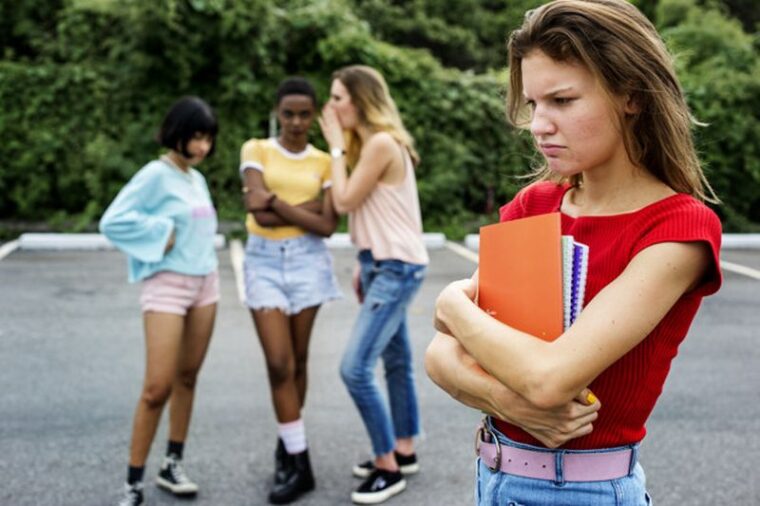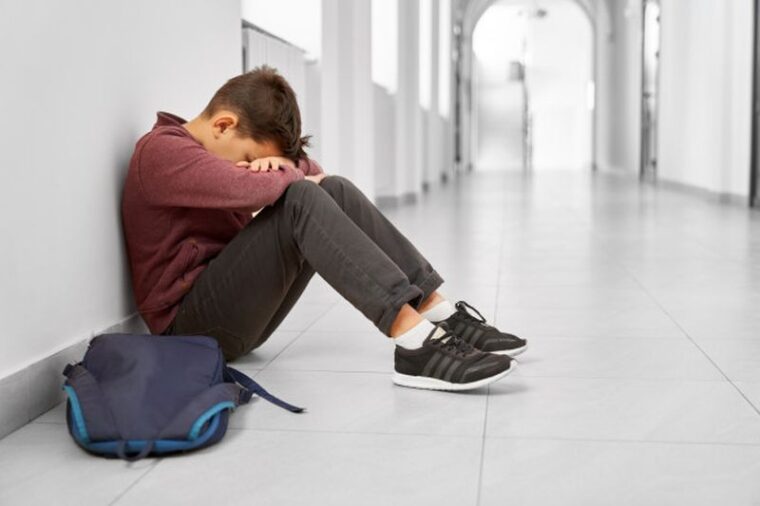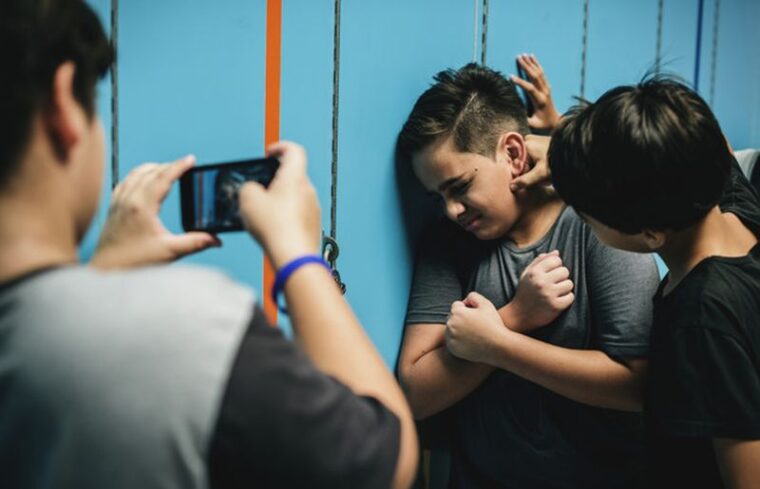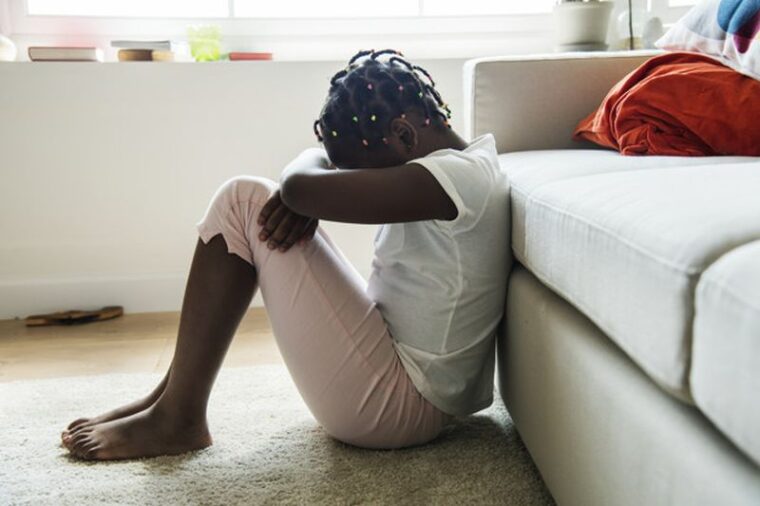There are many kinds of bullying today. Bullying doesn’t just happen among children. It occurs at all levels of school classes from kindergarten to high school to even an adult in the workplace. Understanding bullying is the first step to finding solutions to stopping it. In this article, I will mainly cover school going kids and how they deal with bullying.
A negative school climate is associated with higher rates of student bullying, aggression, victimization, and feeling unsafe. To foster healthy development among students, schools should reinforce a positive climate where kids feel safe and that they belong. Students, teachers, as well as administrators and parents, should be involved so that specific issues can be addressed. Here are some possible ways described at PCYC NSW website in which bullying could be reduced and eventually stopped.

• Talk It Out
Kids can ask a friend how they would handle the situation, get advice from a trusted adult or share their story with someone who cares. They could try to stand up for themselves at the moment by sharing a conversation with the bully using a mediator.
Parents can help their kids by role-playing to prepare for responses during such moments or working with teachers to set up mediated conversations between the kids.
• Advancing Social and Emotional Learning
Social and emotional learning (SEL) involves teaching skills of self-awareness, self-management, social awareness, responsible decision making, and relationships management. SEL helps improve emotional well-being by reducing anxiety, emotional distress, and depression. SEL has also helped foster academic achievement, creativity, and leadership.
• Foster Friendships
Most kids are usually bullied because they are antisocial or a bit introverted. It can help redirect their negative energy into something positive. Teachers can encourage kids to get to know and learn how to work with different people. Parents can help by teaching them social skills and strategies to join in.
If you are a bully victim, find a healthy outlet, such as sports, arts or hobbies. In addition to helping you find new friends, it can help you forget about the abuse, feel good about themselves and open up about what’s going on.

• Controlling Cyberbullying
These days, with the advancement of technology, arises new awareness into the complex roots of online bullying. Many children have been victims of anonymous trolling online. This has led to an increase in various mental health problems in relation to increased stress and pressure by peers online.
When kids are being cyberbullied, they can walk away or ignore the person who is bullying by logging off the site, not respond to messages or block the person who is harassing them. Parents can help by setting rules on screen time, monitoring their kids’ social media activity and teaching them etiquette.
• Restorative Justice Approach
Understanding why kids bully other kids will help them cope. A bully is most often a victim who reiterates by acting out aggressively in turn. Bullying in schools sometimes arises from abusive parenting practices or sibling bullying at home.
Using the restorative justice approach emphasizes repairing the relationship between the victim and the perpetrator and stops the cycle of bullying. It is also an opportunity to teach empathy and compassion. This not only improves that relationship but also sets them up for healthy relationships in the future.
Signs that Your Child Is a Victim of Bullying
Okay, the pieces of advice above will help parents and kids stop the bullying. However, doing that is not the biggest problem of all. Many parents do not even understand that their kid is a victim of bullying. Kids often do not feel comfortable sharing the problems with their parents. On the other hand, parents sometimes think that their kid is overreacting. That is probably the worst thing that could happen. Because of that, we would like to highlight a couple of signs that your child is a victim of bullying.

A Kid Spends too Much Time at Home
There are two reasons why kids that are victims of bullying spend too much time at home. First of all, that is their comfort zone where they are safe. They don’t feel safe outside of the home. In most cases, they will start looking for excuses why they don’t want to go to school or outside. On the other hand, you will easily notice that your child does not have too many friends. In worst cases, your child may potentially stay out of friends. Other kids are afraid of hanging out with the victim of the bullies. In that way, they are trying not to become victims as well.
Let’s be more precise. Your child will probably spend the entire day in his room. He will probably say he is studying school lessons, sleeping, or anything else. In that way, he is not only hiding from the bullies. He is also hiding his emotions from the parents.
Emotional Reactions
Emotional reactions are a normal thing for kids and teenagers. However, victims of the bullying express the emotions a bit more specific. For instance, when you ask your child something about the school, there is a big chance he will start to cry or be angry. That is the sign something wrong is happening there. Parents, in that case, need to ask millions of questions. However, the way how they do that has to be gentle and full of understanding. Only in that way, the child will potentially start talking about the problems that he has.

Withdrawal and Obsession from Devices
As we said, cyberbullying is one of the main problems kids experience today. There are two signs all the parents should be aware of. The child will potentially become obsessed with smartphones, tablets, and other devices. On the other hand, the child may stop using them completely. If they spend too much time on their mobile, you should try to limit their opportunity to use them. Their reaction to your demand can tell you a lot. If a child becomes nervous and angry, there is a big chance they are a victim of cyberbullying. Of course, the way how they express their emotion will look unusual. Because of that, parents should always check out what their kids are doing on social media. The relationship parents and kids have should be open. That is the best way to determine the right moment when you should react.
Conclusion
It’s essential for adults to be alert and to give their full attention when multiple students are present. Bullying behaviours are less likely to occur when an adult is present, and this will help the kids feel safer. Look for warning signs for kids engaging in bullying, engage their parents and have open communication to address it. Remember to set enforceable rules and expectations as well.
